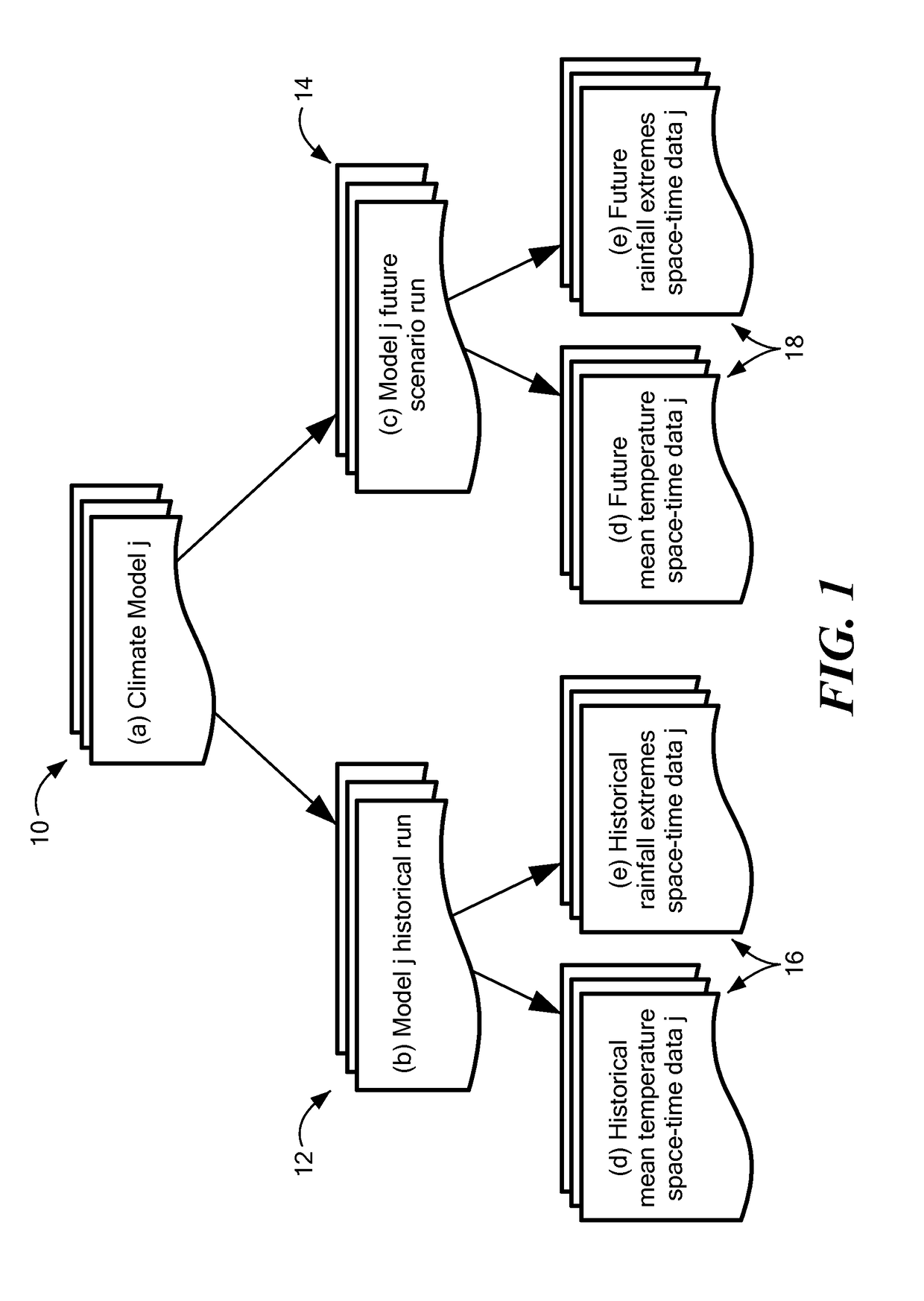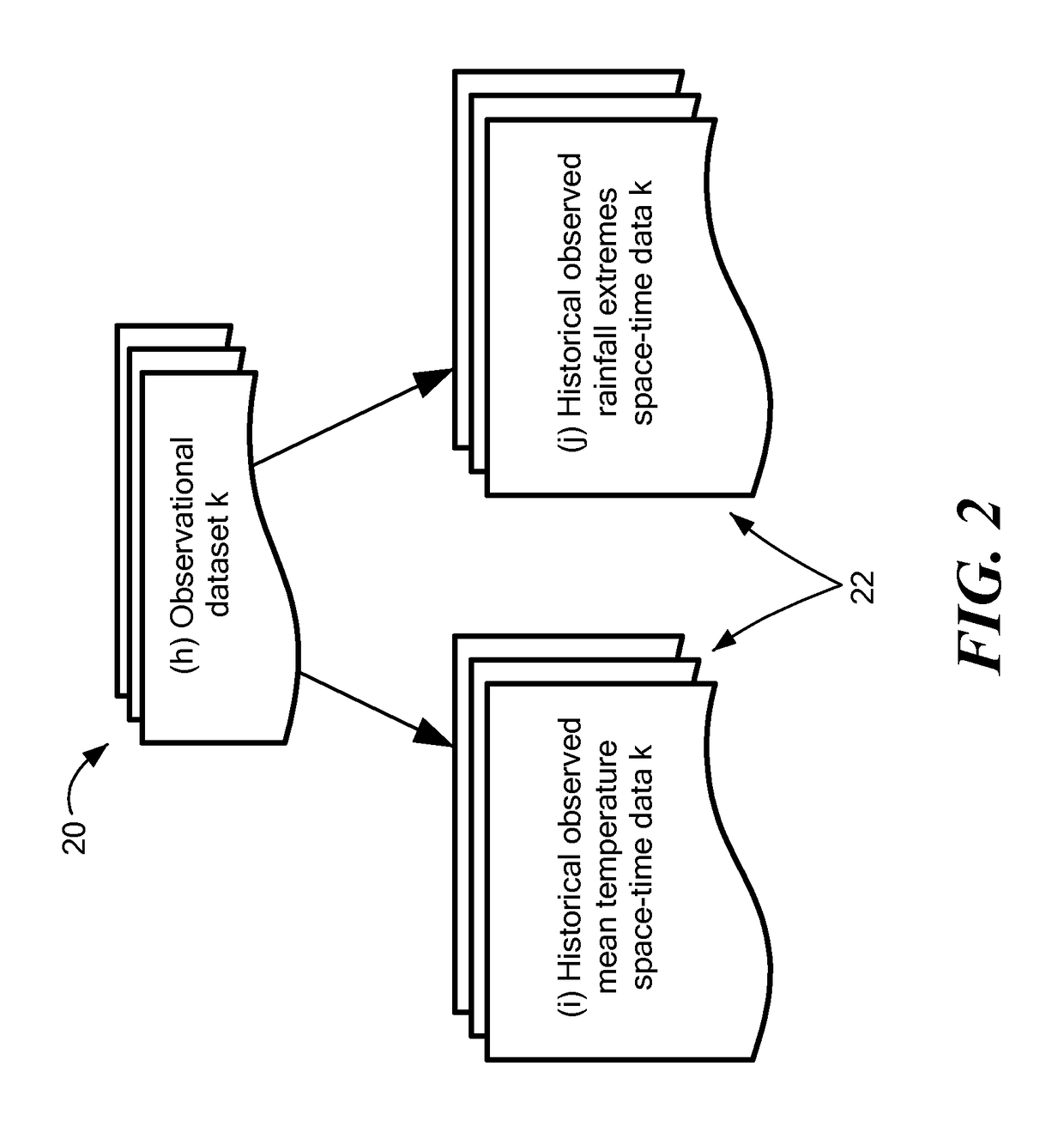System for Multivariate Climate Change Forecasting With Uncertainty Quantification
a multi-variate climate change and uncertainty quantification technology, applied in the field of multi-variate climate change forecasting with uncertainty quantification, can solve the problems of large uncertainty in extremes, increase in precipitation extreme severity and consequences, and general poorly characterized effects
- Summary
- Abstract
- Description
- Claims
- Application Information
AI Technical Summary
Benefits of technology
Problems solved by technology
Method used
Image
Examples
example
[0106]Results using out-of-sample observations indicate that the model produces robust probability distributions for all considered quantiles of extremes and is more reliable than the equally weighted multi-model average projections that have often been considered to be the best choice in prior art literature and climate impact assessments reports.
[0107]Reference is made to FIGS. 5-11. FIGS. 5-9 depict data, using 16 Global Climate Models (GCMs), from one watershed region, in Missouri (“Missouri Region”, as defined by the United States Geological Survey's Watershed Boundary Dataset, Hydrologic Unit 2. FIGS. 10-11 show analytics over 18 watersheds that encompass the continental U.S., to obtain a meta-analysis perspective.
[0108]FIG. 5 depicts one month—September—for the years 1950-1974. (For clarity of depicting the data in FIGS. 5, 6, and 7, only a single month is shown; it will be appreciated that similar graphs are generated for each month, January to December, for the same time pe...
PUM
 Login to View More
Login to View More Abstract
Description
Claims
Application Information
 Login to View More
Login to View More - R&D
- Intellectual Property
- Life Sciences
- Materials
- Tech Scout
- Unparalleled Data Quality
- Higher Quality Content
- 60% Fewer Hallucinations
Browse by: Latest US Patents, China's latest patents, Technical Efficacy Thesaurus, Application Domain, Technology Topic, Popular Technical Reports.
© 2025 PatSnap. All rights reserved.Legal|Privacy policy|Modern Slavery Act Transparency Statement|Sitemap|About US| Contact US: help@patsnap.com



